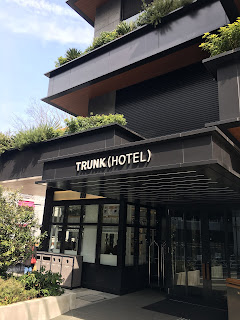I am very humbled and pleased to receive the acceptance. I would like to continue with my studies and brush up on my translation skills.
I have already mentioned about my background last year, so I would like to take this opportunity to state my opinions on a topic that has attracted many attention recently: machine translation.
My impression of machine translation
A few years ago, I only had vague thoughts about how a day where machine translation engine capable of comprehending the text and creating translation just like humans will come up and steal jobs of human translators. Therefore, when machine translation by NMT was introduced, I thought of it as a threat. However, after actually trying out engines from several companies, that impression rather changed.
At first glance, the translated sentences output by the NMT appear to be natural, and in many cases, the translation can be used without being modified if the sentence is short. However, for long sentences seen by many in the field of patents, it tends to result in literal translation having lost its contexts. This is probably due to the fact that the subject-object relationship is complex, and translation would be difficult if the context is not fully understood. This may be avoided to an extent if the original text is pre-edited beforehand; however, it is necessary to understand what the relative pronoun is pointing to, and I believe that translating by machine alone is difficult.
Another big problem with machine translation using NMT is that there are not enough methods to control machine translation. In the NMT, I feel that missing translation occurs that seems to be random and unpredictable. Furthermore, there is little to no way to translate in accordance with certain rules, such as unifying terms, following the clients’ instructions and the like. To deal with these problems, it is necessary in the end for humans to check and correct the translation by comparing it with the original text. However, since a lot of correction is needed, and it seems as if machine translation is not useful even as rough translation.
From this, I no longer think of the current machine translation as something that would replace human translators, and I now realize it is not so easy to use the machine translation to increase efficiency of the patent translation work.
How to make use of machine translation
In the end, human translation may be most efficient in regards to patent translations. However, it is clear that the accuracy of machine translation has improved over the years, and it would be ideal to increase work efficiency by better incorporating it into our work.
Recently, I have learned about Adaptive Machine Translation (AMT), and we are in the process of a trial. The AMT tool we are currently trying has a display similar to a normal CAT tool. A machine-translated sentence is suggested sentence by sentence, and the translators check and correct as necessary. After confirming the translation, the machine learns the translated terms and the like from the corrected translation and reflects on the subsequent translation sentences. For example, with the term “engaging member”, if the machine initially suggests “係合部材” and the translator confirms the sentence after changing it to “係止部材”, the AMT will suggest “係止部材” every time “engaging member” appears, and thus, it becomes easy to unify terms. In addition, translation itself is done by humans, so the above-mentioned problems would not occur. In fact, such a method that utilizes machine translation to the fullest while having humans to constantly control in this manner may be ideal for patent translation.
* This article is written by Kenji Nagahara, senior translator at MK Translation Firm, and he is the first in Japan to obtain NIPTA 1 certificate in three fields (EN to JA: Electric/Electronic, Chemistry, Machinery).
* Translation is done by Hiroko Matsuda, translator at MK Translation Firm





